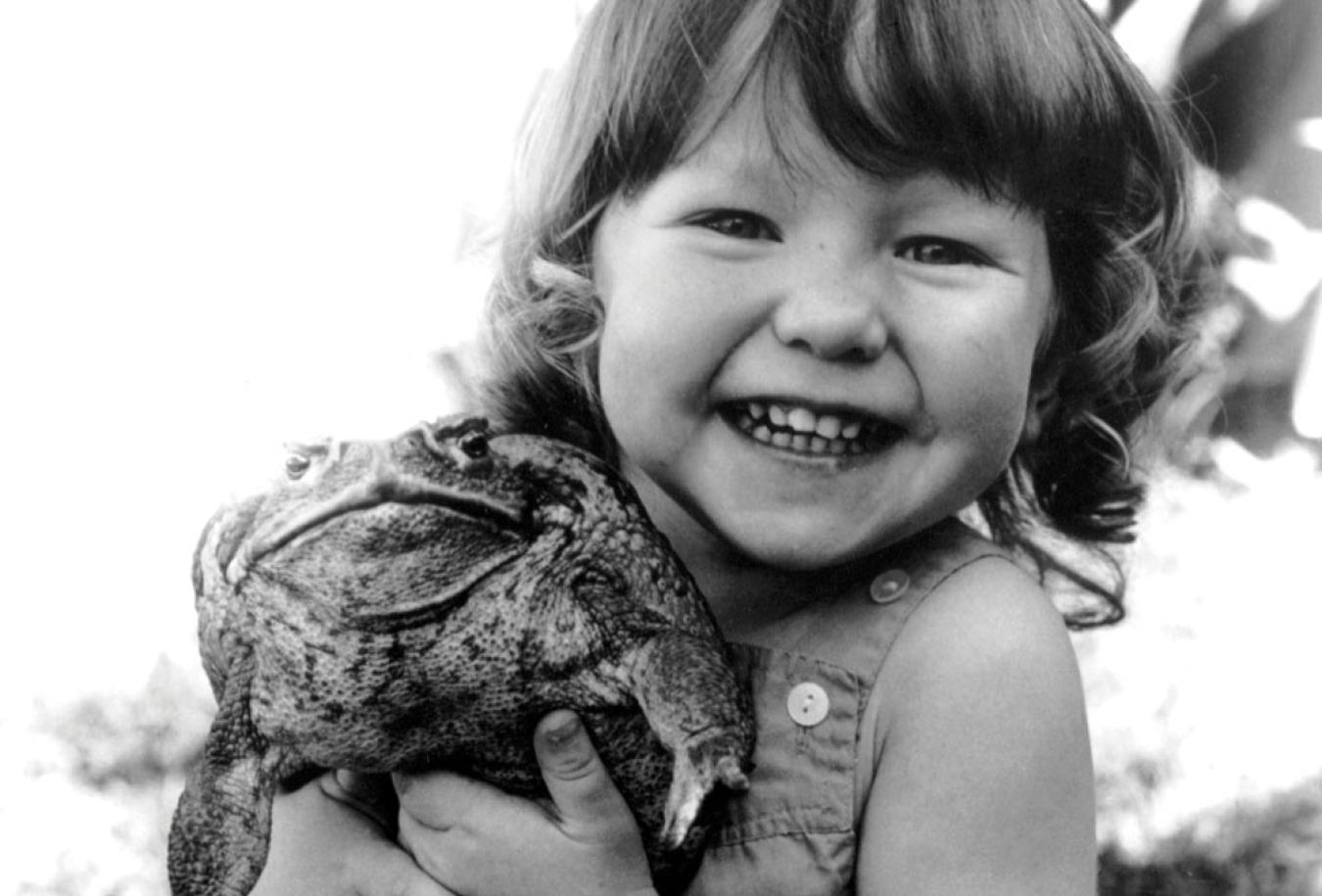
Plan your visit
Around the web
Contact
Email sign up
Never miss a moment. Stories, news and experiences celebrating Australia's audiovisual culture direct to your inbox.
Donate
Support us to grow, preserve and share our collection of more than 100 years of film, sound, broadcast and games by making a financial donation. If you’d like to donate an item to the collection, you can do so via our collection offer form.
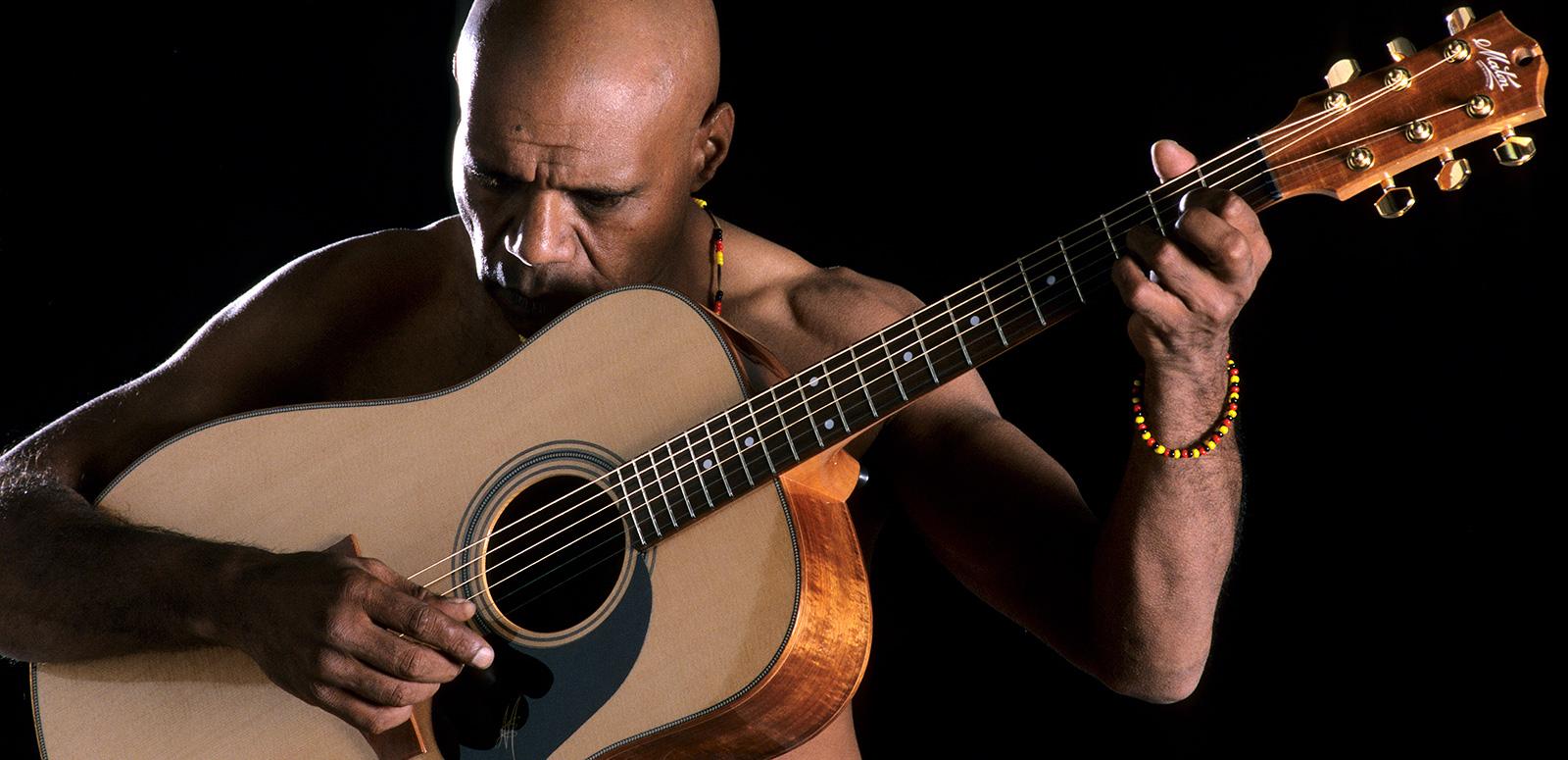
First Nations Sounds of Australia
First Nations Sounds of Australia
WARNING: this collection contains names, images or voices of deceased Aboriginal and Torres Strait Islander people.
They include the best-selling Aboriginal music album in history, the first mainstream chart hit for an Aboriginal artist, a poetry reading by Oodgeroo Noonuccal and Tasmanian Aboriginal songs and languages recorded in the 1890s.
Also represented are popular artists like Christine Anu, Archie Roach (pictured above), Kev Carmody, No Fixed Address, Yothu Yindi and the Warumpi Band.
These sounds are all part of Sounds of Australia. Established in 2007, the Sounds of Australia is the NFSA’s selection of sound recordings which inform or reflect life in Australia. See the complete Sounds of Australia list.
‘Treaty’ was one of the singles lifted from Yothu Yindi’s ‘Tribal Voice’ album, released in 1991. This is an excerpt from the first verse and chorus.
Notes by Sophia Sambono
In this recording, Fanny Cochrane Smith talks about being the last of the Tasmanians. She then sings in both English and her own language. It is part of a series of recordings made between 1899 and 1903.
Summary by Sophia Sambono
Kevin Carmody and Paul Kelly discuss the song 'From Little Things Big Things Grow’. They also discuss the Wave Hill walkout, when the Gurindji people – led by Vincent Lingiari – went on strike to get their land back from British Lord Vestey. Black-and-white footage of the actual strike is juxtaposed with the interview with Carmody and Kelly.
In 1901-02, Baldwin Spencer and Frances James (FJ) Gillen undertook an anthropological research expedition to Central Australia. They traversed the continent from Oodnadatta to Powell Creek and then eastwards to Borroloola on the Gulf of Carpentaria, publishing their experiences as The Northern Tribes of Central Australia in 1904. On the way they recorded many wax cylinders, working with the Arrernte, Anmatyerr, Kaytetye, Warumungu, Luritja and Arabana peoples.
Their recordings are now part of the British Library, Royal Geographical Society of South Australia and Museum Victoria. The pioneering use of wax cylinders in their expedition captured the distribution of song and dance traditions across the Australian inland. Their work was subsequently expanded on by successive researchers, including anthropologist Ted Strehlow, and Aboriginal community members. Selected recordings are available online via the Spencer and Gillen project website.
The ‘Song of Tjitjingalla Corroboree’ (heard here) was recorded at Stevenson Creek in South Australia on 22 March 1901. Spencer’s introduction notes that this corroboree had first been described in north-central Queensland and was subsequently performed by Arrernte people at Alice Springs.
Cover image: Arrernte men performing dances from the Tjitjingalla corroboree, Alice Springs, 27-30 April 1901. Photographers: Sir Walter Baldwin Spencer and Frank Gillen. Source: Museums Victoria
Find more significant Indigenous recordings in our Indigenous Sounds of Australia curated collection. And you can also hear more recordings on wax cylinder at our Wax Cylinder Recordings curated collection.
Christine Anu’s, Island Home was released in 1995, as the second single from her debut studio album, Stylin' Up. It is a cover of a track written by Neil Murray, and originally released by the Warumpi Band as a single from their album Go Bush in 1987.
Anu’s version made some changes to the lyrics; rather than moving to the desert, she compares island life to the city life, and tells the story from a female perspective.
The work won Song of the Year at the 1995 Australasian Performing Right Association (APRA) Awards, and was listed in APRA’s Top 30 Australian songs of all time in 2001.
While Jimmy Little had been recording since the mid 1950s, it wasn’t until the release of Royal Telephone in 1963 that he became better known outside the country music genre. This was the first recording by an Indigenous Australian to achieve mainstream chart success, reaching no.1 on the Sydney charts and no.10 nationally. The song established him as a star in Australian popular music and his career continued for over 40 years.
Festival FK453
Although not the first song about the enforced separation of Indigenous children from their families, Archie Roach’s song, based on his own life and experience, was released at a time when there was increasing public focus on the Stolen Generations.
The significance of the song also resonated outside the Indigenous community with Roach winning ARIA Awards for Best Indigenous Release and Best New Talent in 1991. Took the Children Away received an international Human Rights Achievement Award, the first time that the award had been bestowed on a songwriter.
Archie Roach (1956–2022) was a Gunditjmara (Kirrae Whurrong/Djab Wurrung), Bundjalung Senior Elder. To learn more about his life and work, explore the curated collections Archie Roach and Archie Roach and Ruby Hunter.
Notes by Beth Taylor and Adam Blackshaw
Yarra River Blues is one of two Australian tracks to feature on Georgia Lee’s 1962 album ‘Georgia Lee Sings The Blues’.
Summary by Brenda Gifford
In this clip we hear the landmark Aboriginal protest song 'We Have Survived’, as performed by No Fixed Address on the soundtrack of 'Wrong Side of the Road' (1981).
Summary by Brenda Gifford
Gurrumul was the debut solo album for singer, songwriter and multi-instrumentalist Geoffrey Gurrumul Yunupingu (1971–2017), referred to as Dr G Yunupingu since his death. It is the best-selling Aboriginal and Torres Strait Islander music album in Australian history, having been awarded triple platinum status.
The University of Sydney granted Dr G Yunupingu an Honorary Doctorate of Music in 2012. Blind from birth, his musical education was largely self-taught and through cultural immersion; he learned drums, keyboards, guitar, didjeridu, foot stomping and calling, whooping, vocalisation of traditional songs, and more. Gurrumul is performed in a mixture of both Yolngu languages and English, with lyrics that often refer to traditional lore, and relationships with family and nature.
The album peaked at No. 3 on the ARIA chart but reached No. 1 on the independent chart and was an international success on world music charts. At the 2008 ARIA Awards the album won Best World Music Album and Best Independent Release, and also won three Deadly Awards for Artist of the Year, Album of the Year and Single of the Year for the track ‘Gurrumul History (I Was Born Blind)’.
The autobiographical single, extracted here, represents many of the themes that connected Dr G Yunupingu’s music to his audience: his bilingual vocals, his personal story of blindness, and living across cultures.
Wilma Reading spent most of her singing career abroad, with little fame or recognition back in Australia.
She was born in Cairns to a musical family, with an Aboriginal (Kalkatungu)-Torres Strait Islander mother and an English-Irish father. She began her singing career with her two sisters in The Reading Sisters trio, before starting a solo career in Brisbane in 1959.
In 1960 she relocated to Sydney, where she had a regular gig at the Latin Quarter in Kings Cross and recorded for the Rex record label. Reading released three 7” singles with Rex, performing jazz and lounge vocals.
The third single included ‘I Only Came to Say Goodbye’ (A-side) and 'That’s How I Go for You' (B-side). Both songs were written or co-written by the musical director of Rex, Franz Conde.
Reading’s vocals were described as ‘honeyed’, and were backed by lush strings, chorus and orchestra, giving the recordings a big band feel and a touch of nightclub glamour.
Shortly after the release of this single, Reading headed to Tokyo and then Las Vegas where she launched her international career, performing on The Tonight Show Starring Johnny Carson and touring with Duke Ellington.
She sang with the national orchestras of Belgium, the Netherlands, Iceland and Germany, and even performed at the reunification of East and West Germany in Berlin in 1990.
Harold Blair sings 'Maranoa Lullaby’ on an unreleased recording from 1950.
Summary by Brenda Gifford
A man, identified by British Library records as ‘Maino of Yam’, sings a traditional song entitled Yamaz Sibarud. He sings the song a capella. The recording fades out as the man continues to sing.
Summary by Rhianna Patrick
This is the first verse of ‘Jailanguru Pakarnu’, a 12-bar rock and blues song performed in this clip by the Warumpi Band. It is the first rock song in an Aboriginal language to achieve widespread airplay and recognition.
Summary by Brenda Gifford
This is a 30-second excerpt from the beginning of 'Stranger in My Country’, written and performed by Vic Simms. Simms recorded this song from his LP 'The Loner’ during a single one-hour recording session in a mobile studio in Bathurst Gaol in 1973.
Summary by Brenda Gifford
Radio announcer Ron Casey calls the closing minutes of the bantamweight world title fight between Lionel Rose of Australia and 'Fighting’ Harada of Japan on 26 February 1968.
Summary by Graham McDonald
Cousins Olive McGuiness and Eva Bell were a harmony duo known as Olive and Eva, active in the 1950s. Over the span of their career they had two releases on Australia’s Prestophone label, becoming the first Indigenous recording artists to release a commercially available disc.
As cousins, they spent their childhood in Cowra then Sydney amongst the Wiradjuri people of NSW. It was here they met the composer of their music, Grace O’Clerkin. Their first release in 1955 featured four songs written by O’Clerkin.
Two of them – 'Old Rugged Hills' and 'Rhythm of Corroboree' (heard here) – drew inspiration from Australia’s bushland and its First Peoples. These songs paint a romantic picture of an idyllic land of ancient river gums and mystic legends.
This Prestophone mastertape is a rare survivor from the early vinyl era in Australia and includes the master recordings for all four songs recorded by the duo – the additional tracks were ‘Maranoa Moon’ and ‘Homeland Calling’.
Image: Olive McGuiness (aged 18) and Eva Bell (aged 16). Source: The Australian Women’s Weekly, 7 December 1955, p.15 retrieved from Trove.
During the 1988 bicentennial year, the Radio Redfern program played a pivotal role in informing and educating the public about First Nations responses to 200 years of colonisation. These recordings capture 17 hours of the Radio Redfern broadcast on Radio Skid Row (2RSR 88.9FM) during bicentenary protests on 26 January.
Radio Redfern was the main source of information for people wanting to join the protests. The Sydney march attracted more than 40,000 people and was the largest protest in the city since the Vietnam moratorium. The broadcast included interviews and music from First Nations artists.
In this clip, Tiga Bayles calls Charlie Watson in the Radio Redfern studio during the last musical performance of the rally at Hyde Park. Bayles is concerned by the arrival of a bus full of police. He describes the scene to Watson and then talks to a police officer and a sergeant. Bayles and Watson urge listeners to contact police liaison units and parliamentarians to help prevent police violence at Hyde Park.
Maureen Watson and her son, Tiga Bayles began broadcasting on 2SER in 1981 to bring local radio into the Redfern community. They subsequently moved to Radio Skid Row (2RSR) in 1984, where they set up the Radio Redfern program, producing 10 hours of programming a week. Operating out of a terrace house on Cope Street in Redfern, it expanded to 40 hours of programming per week until its closure in 1990.
During the 1988 bicentennial year, the Radio Redfern program played a pivotal role in informing and educating the public about First Nations responses to 200 years of colonisation. These recordings capture 17 hours of the Radio Redfern broadcast on Radio Skid Row (2RSR 88.9FM) during bicentenary protests on 26 January.
Radio Redfern was the main source of information for people wanting to join the protests. The Sydney march attracted more than 40,000 people and was the largest protest in the city since the Vietnam moratorium. The broadcast included interviews and music from First Nations artists.
In this clip, radio presenter Cheryl Rose interviews people on the day about their expectations for the day, their feelings about the march, and its importance for Aboriginal people.
Maureen Watson and her son, Tiga Bayles began broadcasting on 2SER in 1981 to bring local radio into the Redfern community. They subsequently moved to Radio Skid Row (2RSR) in 1984, where they set up the Radio Redfern program, producing 10 hours of programming a week. Operating out of a terrace house on Cope Street in Redfern, it expanded to 40 hours of programming per week until its closure in 1990.
During the 1988 bicentennial year, the Radio Redfern program played a pivotal role in informing and educating the public about First Nations responses to 200 years of colonisation. These recordings capture 17 hours of the Radio Redfern broadcast on Radio Skid Row (2RSR 88.9FM) during bicentenary protests on 26 January.
Radio Redfern was the main source of information for people wanting to join the protests. The Sydney march attracted more than 40,000 people and was the largest protest in the city since the Vietnam moratorium. The broadcast included interviews and music from First Nations artists.
In this clip, we hear from Chris Kirkbright, Registrar of the NSW Aboriginal Land Rights Act. He talks to the philosophy of the protests, and why the arrival of white people in Australia meant hurt, suffering, disease and genocide for the Aboriginal people, rather than celebration; Aboriginal people would instead be celebrating the survival of their people on 26 January 1988.
Maureen Watson and her son, Tiga Bayles began broadcasting on 2SER in 1981 to bring local radio into the Redfern community. They subsequently moved to Radio Skid Row (2RSR) in 1984, where they set up the Radio Redfern program, producing 10 hours of programming a week. Operating out of a terrace house on Cope Street in Redfern, it expanded to 40 hours of programming per week until its closure in 1990.
In this clip, Oodgeroo Noonuccal reads her poem ‘We Are Going’ in full to an appreciative audience at the Harold Park Hotel in Sydney in 1986.
Summary by Michael Weir
‘Bran Nue Dae’ was the title track from Kuckles’ first album Brand New Day (Milliya Rumarra), released on cassette only in 1981.
Kuckles (Broome kriol for cockles) was formed by students from Broome studying at the Centre for Aboriginal Studies in Music in Adelaide, including Jimmy Chi, Mick Manolis, Stephen Pigram, Patrick Bin Amat and Garry Gower. Drawing on acoustic calypso and electric reggae-rock styles they recorded one album, and disbanded in 1982.
Kuckles’ songs later appeared in Jimmy Chi’s stage musical Bran Nue Dae in 1990, the subject of a documentary in 1991 and adapted into a hit film in 2009.
Harry Williams (Wiradjuri, 1927-1991) and Wilga Munro Williams (Kamilaroi, born 1943) performed together with the Country Outcasts band during the 1970s and 1980s, touring widely throughout Australia, New Zealand, Papua New Guinea, Solomon Islands and Canada.
They released two singles (in 1974 and 1975) and two full-length albums: Harry Williams and the Country Outcasts (1979, RCA) and Harry & Wilga Williams and the Country Outcasts (1981).
Both Harry and Wilga sang on the 1979 debut album. It includes tracks such as ‘Streets of Old Fitzroy’, which draws on the history and challenges of living in Fitzroy, which became the largest Aboriginal community in Victoria and was the social and political hub of Aboriginal Melbourne.
Country Outcast band members included Bill Brunswick, Debbie Williams, Ian ‘Ocker’ McKie, Carole Fraser, Ian Johnson, Harry Thorpe, Laurie Ingram, Claude ‘Candy’ Williams, Mac Silva and Auriel Andrew.
Harry and Wilga Williams started a national Aboriginal Country Music Festival in Canberra in 1976, and a radio show, Country Music Shindig, for 3CR. In 1981 they were recognised in the Country Music Hands of Fame in Tamworth.
Harry Williams (Wiradjuri, 1927-1991) and Wilga Munro Williams (Kamilaroi, born 1943) performed together with the Country Outcasts band during the 1970s and 1980s, touring widely throughout Australia, New Zealand, Papua New Guinea, Solomon Islands and Canada.
They released two singles (in 1974 and 1975) and two full-length albums: Harry Williams and the Country Outcasts (1979, RCA) and Harry & Wilga Williams and the Country Outcasts (1981).
Both Harry and Wilga sang on the 1979 debut album. It includes tracks such as ‘Take Me to Your World’, which highlights Wilga on vocals. Even in this short clip, you can hear the depth and emotion in her voice; Wilga has stated in interviews that she was influenced at the time by singers like Patsy Cline.
Country Outcast band members included Bill Brunswick, Debbie Williams, Ian ‘Ocker’ McKie, Carole Fraser, Ian Johnson, Harry Thorpe, Laurie Ingram, Claude ‘Candy’ Williams, Mac Silva and Auriel Andrew.
Harry and Wilga Williams started a national Aboriginal Country Music Festival in Canberra in 1976, and a radio show, Country Music Shindig, for 3CR. In 1981 they were recognised in the Country Music Hands of Fame in Tamworth.
Linguist Luise Hercus has spent over 50 years recording and studying Australian Aboriginal languages. She produced over 1,000 hours of unpublished recordings documenting Aboriginal languages from Victoria, New South Wales, South Australia, the Northern Territory and Queensland. This invaluable collection includes recordings of more than 40 Aboriginal languages which are endangered or no longer spoken, including Arabana, Birladapa, Diyari, Kuyani, Madhi Madhi, Malyangapa, Ngarigu, Wangkangurru, Wergaia, Wirangu, Yardliyawarra, Yarluyandi and many others. It contains the only known recordings of some of these languages.
This clip features a verse from a wind arresting song belonging to Pirlakaya native well ‘Beelaka’ and sung by Mick McLean in Port Augusta on 31 January 1974. Mick McLean’s birthplace is in the central Simpson Desert and the language he’s singing in is Wangkangurru.
Djedbang-ari is a three-part Indigenous manikay (song) and dance from the Yirrkala district in the far north-east of Arnhem Land.
Summary by Sophie Sambono
These rare examples of Aboriginal songs were recorded by John Hutchinson, one of Australia's foremost field recordists, in 1959 along the north-west coastline of Australia. The recordings are an amazing snapshot of Aboriginal life in that period and range from traditional songs to newer compositions that reflect the changing dynamics of Aboriginal society through contact periods. Their significance not only lies in forging greater understanding of Indigenous Australia and its place within Australia’s history but contributes to cultural maintenance and resurgence for many Aboriginal communities in ensuring that their language songs and stories can continue to be passed on. Hutchinson died this year and the NFSA will build on his legacy by continuing to facilitate the return of these recordings to the Aboriginal communities from where the songs originated and celebrating the significance of the recordings to all.
This track is: Tracks at Mulga Downs; NFSA title: 1275952
This six-track EP was the first recording of an Indigenous Australian singing his own compositions in a country music style. Dougie Young was born of mixed parentage in Cunnamulla in the early 1930s, and worked as a stockman in Southern Queensland while learning guitar and developing his songwriting. The recording was made in Wilcannia in 1964, where Young was living in the Aboriginal community on the edge of town, by anthropologist Dr Jeremy Beckett and released by Wattle Records in 1965.
Wattle B5
Deadly Sounds was a weekly one-hour Indigenous radio program featuring interviews with special guests and music by Indigenous artists. Hosted by journalist, actor and author Rhoda Roberts, it ran for 21 years from 1993. In the first episode, Roberts discussed racism in sport with Nicky Winmar, St Kilda player in the AFL league, and spoke to two Indigenous high school students about their winning entry at the Sydney finals of the Rock Eisteddfod. The Deadly Sounds musical intro, which you can hear in the clip below, emphasises the program’s focus on Indigenous music ('listen to black music, hear the deadly sounds’). To that end, the first episode also introduced the Deadly Sounds National Indigenous Music Chart, which helped give exposure to emerging and established Indigenous musicians. Deadly Sounds was distributed nationally to over 200 stations every week, initially on cassette and later through the Community Radio Network and National Indigenous Radio Service satellites.
Arnhem Land Popular Classics was the first record to bring widespread attention to the didjeridu (didgeridoo or dijeridoo), also known as the yidaki in Yolgnu.
The recording features several senior Aboriginal men playing didjeridu and singing. It was recorded by USA linguist La Mont West Jr at Beswick Creek Welfare Branch Settlement, near Katherine, Northern Territory in 1961–62.
Pioneering folk music label Wattle Records released the recording, which includes musical genres from Arnhem Land, Wonga from the west, Gunborg from the north-central region and Bunggul from the north-east. The tracks were recorded in an improvised studio, with the didjeridu featuring prominently.
This excerpt comes from track 1, 'A Bungalin-Bungalin Gunborg', which features didjeridu by David Bylanadii (Blanasi) and songman Jolly Lajwonga (Djoli Laiwanga).
Blanasi (c.1930–c.2001), an Aboriginal man of the Mialili language group of west Arnhem Land, subsequently went on to promote the didjeridu internationally, performing on The Rolf Harris Show in England in 1967 and touring with a traditional dance troupe including songmaster Djoi Laiwanga and dancer-actor David Gulpilil. Blanasi later co-founded the White Cockatoo Performing Group.
More to explore
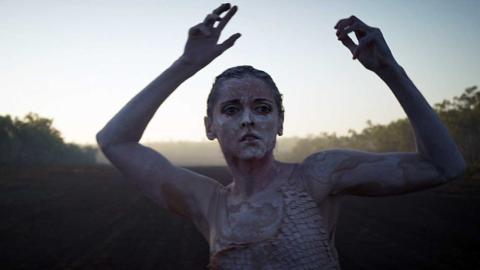
The Buwindja Collection on NFSA Player
The Buwindja Collection, now available to stream on NFSA Player, celebrates Aboriginal and Torres Strait Islander trailblazers, icons and dreamers.
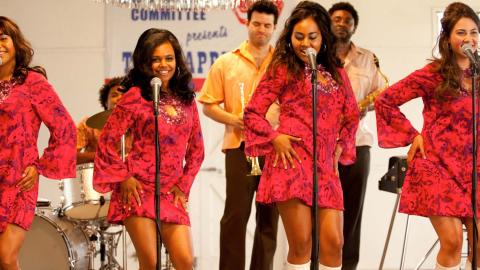
Black and Deadly: First Nations Female Music Stars
Celebrating the black and deadly women of Australian music, from Fanny Cochrane Smith in the 1890s to Jessica Mauboy in the 21st century.
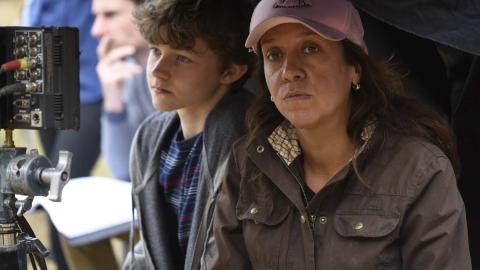
Portraits of Prominent First Nations Australians
In these portraits, prominent First Nations Australians talk about their lives.
The National Film and Sound Archive of Australia acknowledges Australia’s Aboriginal and Torres Strait Islander peoples as the Traditional Custodians of the land on which we work and live and gives respect to their Elders both past and present.